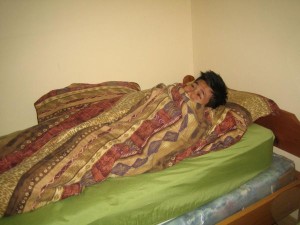When it comes to restless leg syndrome, it is a condition characterized by an uncontrollable desire experienced by the individual to move the legs.
Symptoms
The indications of restless leg syndrome usually include an unpleasant sensation in the legs while at rest which eases during movement. The symptoms frequently occur in the lower leg, but can manifest in the thigh, ankle or foot.
It is important to note that the symptoms are usually found in both legs at the same time and most cases also involve episodic limb movement disorder that triggers involuntary leg twitching and jerky movements. The symptoms of restless leg syndrome tend to worsen in the evening and at their best in the morning.

Overview on restless leg syndrome
Restless leg syndrome is oftentimes called Wittmaack-Ekbom’s syndrome and considered as a neurological condition that only occurs when the legs are being rested. If the individual moves the legs, it eases or eliminates the symptoms. The degree of these sensations can range from mild to irritating or even severe.
Since the symptoms only manifest while at rest, many individuals find it difficult to sleep and exhaustion is one of the debilitating results of the condition. Even though it can occur at any age and either gender, it is quite common among women starting at middle age onwards. The symptoms also worsen with age. There are certain medications that can trigger the symptoms as a side effect.
Essentially, the exact cause of restless leg syndrome is unknown. Almost half of the cases have a family history of the condition which indicates that it might be genetic. There are certain factors that can contribute to the development of restless leg syndrome.
- Certain medications
- Anemia
- Pregnancy
- Tobacco, alcohol and caffeine
- Conditions such as Parkinson’s disease, diabetes, kidney failure and peripheral neuropathy
Treatment of restless leg syndrome
In case an underlying health condition is responsible for restless leg syndrome, management of this condition will provide a beneficial effect on minimizing the symptoms.
As for cases that do not have an underlying cause, the treatment is usually focused on relieving the symptoms. Changes to the lifestyle such as reducing the intake of alcohol, tobacco and caffeine might be the first step. Other changes include altering the sleeping pattern so that more sleep is done in the mornings when the symptoms are often reduced. In addition, introducing exercises and the use of supplements to correct any nutritional deficiencies can also help. Massage, hot baths, hot or cold packs and stretching are also recommended as part of managing the symptoms. To learn to recognize and manage this condition, register for a first aid class today.
If these treatment options failed, the doctor will prescribe medications such as opioids, nervous system depressants or anti-convulsants to help minimize the symptoms. Remember that not one medication is effective for each case and can trigger side effects, thus the individual must discuss with his/her doctor.
When it comes to the musculoskeletal treatment, it involves the use of osteopathic manipulations to minimize the symptoms. It has been effective in most cases.
